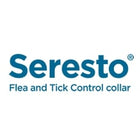
Summer is the season for outdoor fun, meaning more time with your dog. But along with the sunshine come fleas and ticks—tiny parasites that can lead to serious health issues such as Lyme disease, tick paralysis, flea allergic reactions, tapeworms, and bacterial infections. Here’s a comprehensive guide in simple, professional language to help your website rank well on Google and, more importantly, protect your beloved pet.
Why Flea and Tick Prevention Matters
Fleas and ticks are not just a nuisance; they can significantly impact your dog's health:
- Disease transmission: Ticks carry pathogens like Borrelia burgdorferi, which causes Lyme disease.
- Allergic reactions: A flea bite can trigger intense itching and inflammation in sensitive dogs.
- Anemia: Heavy infestations, especially in puppies, may lead to anemia.
- Secondary infections: Pets scratching or biting at irritated skin can cause open wounds susceptible to bacterial infection.
Protecting your dog from these pesky parasites prevents discomfort, expensive veterinary treatment, and potentially life-threatening illnesses.
Effective Strategies for Flea and Tick Prevention
1. Regular Use of Preventive Treatments
Use veterinarian-recommended preventative products:
- Topical treatments: Applied monthly on the back of the neck (e.g., fipronil or imidacloprid formulations).
- Oral medications: Chewable tablets taken monthly, such as those containing afoxolaner or fluralaner.
- Collars: Long-lasting options (6–8 months) infused with insecticides like flumethrin and imidacloprid.
Choose treatments based on your dog’s age, weight, health status, and lifestyle. Always consult your veterinarian before starting any preventative to ensure suitability and correct dosage.
2. Consistency Is Key
Adhering consistently to your parasite-prevention schedule is crucial. Gaps in treatment can leave your dog vulnerable to flea eggs, larvae, or ticks waiting nearby.
Tip: Set up a calendar reminder or subscribe to an automatic refills service to never miss a treatment dose.
3. Grooming and Inspection
Regular grooming helps spot fleas or ticks early:
- Bathing with flea-safe shampoo: Helps reduce numbers immediately after a walk.
- Comb through fur: Use a fine-tooth flea comb weekly, paying close attention to the belly, armpits, and neck.
- Tick checks: After outdoor excursions, thoroughly inspect ears, between toes, armpits, neck, and collar area. Ticks can latch on unnoticed for hours.
Prompt removal (within 24 hours) of ticks significantly reduces the risk of disease transmission.
4. Tick-Safe Outdoor Habits
Take proactive steps during outdoor time:
- Avoid high-risk zones: Clear areas with tall grass, thick brush, or heavy shrubbery.
- Keep to shaded paths: Ticks prefer humid, shaded habitats.
- Clear yard brush: To limit tick habitats, regularly mow the lawn, trim shrubs, and remove leaf litter around fences and patios.
5. Clean, Protect, Repeat: Home & Yard Maintenance
To stop infestations before they start:
- Wash bedding weekly: Use hot water and a tablespoon of pet-safe flea spray if needed.
- Vacuum floors, carpets, and upholstery: Include cracks along baseboards and beneath furniture.
- Yard care: Consider professional treatments like beneficial nematodes—microscopic organisms that naturally control flea larvae—and keep mulch and wood chip areas trimmed back.
6. Know the Warning Signs
Look out for flea or tick infestations:
|
Symptoms |
Symptoms |
|
Intense scratching or biting |
Flea bites, possible allergy |
|
Red, inflamed skin or scabs |
Could indicate bites, infections |
|
Live ticks attached |
Immediate need for removal |
|
Hair loss or bald spots |
Persistent scratching |
If you notice these, act quickly—speak with a veterinarian for guidance on treatment.
Quick-Action Flea and Tick Response Protocol
- Bathe your dog: Use lukewarm water and veterinarian-approved anti-flea/tick shampoo.
- Comprehensive comb-through: Use a flea comb and pat down with a white cloth—live fleas will show up as black dots or red spots.
- Apply medication or collar: A single treatment cycle may be enough to extinguish a growing infestation.
- Treat your home and yard: Clean all bedding, vacuum every surface thoroughly, and treat carpets or rugs with pet-safe insecticides if needed.
- Visit the vet if symptoms persist. This is especially important if your dog is unwell, feverish, or showing signs of illness after a tick bite.
Why Partner With a Veterinarian?
- Professional guidance: Vets tailor parasite prevention plans to your dog’s breed, age, and lifestyle.
- Early disease testing: Regular screenings for tick-borne illnesses like Lyme, ehrlichiosis, and anaplasmosis.
- Up-to-date treatment options: Vets can access the latest, most effective flea and tick prevention formulas.
In Summary
Preventing fleas and ticks doesn’t have to be complicated. You can protect your furry friend all summer with a comprehensive plan—including consistent use of vet-recommended preventatives, regular inspections, grooming, tick-safe outdoor choices, and continual home and yard maintenance. Whenever symptoms of infestation appear, fast action and veterinary feedback are crucial to ensure your dog stays healthy and happy.






